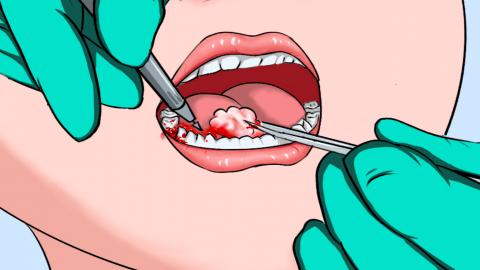Are the wisdom teeth on the top or bottom?
Generally speaking, wisdom teeth refer to the third molars, which can erupt either on the upper or lower jaw. The details are as follows:

The third molars usually grow on the innermost part of the alveolar bone in the human mouth. A normal permanent dentition typically includes four third molars, one in each of the upper left, upper right, lower left, and lower right positions. The eruption of third molars varies from person to person; some individuals may have all four third molars erupt, which may differ in position and direction. Others may only have some of their third molars erupt, and some may never have them erupt throughout their lifetime.
The growth of upper and lower third molars is influenced by multiple factors, including jaw space, genetics, and individual development. Due to the relatively limited space in the lower jaw, lower third molars often encounter resistance during eruption, leading to tilted, horizontal, or even impacted growth patterns. These conditions make them more prone to cause pericoronitis of the third molar and dental caries in adjacent teeth. In comparison, the maxillary bone where the upper third molars are located generally provides more space, resulting in a slightly lower probability of eruption obstruction. However, upper third molars can also erupt ectopically, compressing adjacent teeth, causing food impaction, bacterial proliferation, and ultimately damaging the health of surrounding teeth.
It is important to maintain good oral hygiene in daily life. One should brush teeth at least twice daily, each brushing lasting no less than three minutes, and use dental floss and interdental brushes to thoroughly clean the tooth surfaces, interdental spaces, and areas around the wisdom teeth. This helps reduce the likelihood of third molar inflammation caused by food residue.




